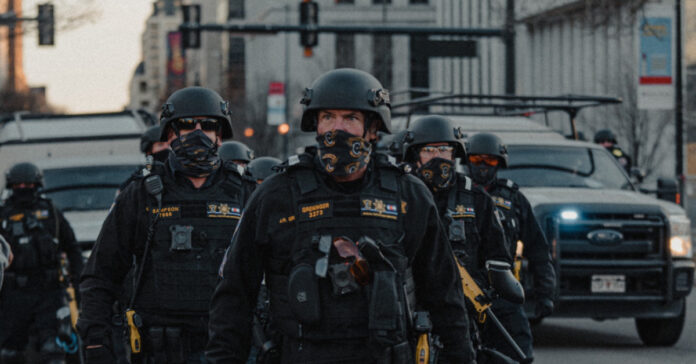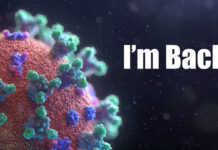Webster defines mandate as “to officially require something; make (something) mandatory” and by Dictionary.com as “an official order to do something.”
America was founded on freedom and liberty and the concept that the powers of government are limited. Nowhere in the Constitution is the president or the executive branch given the power to force people to get vaccinated, and the CDC is part of the executive branch. Yes, in 1905, the Supreme Court allowed fining someone $5 for not taking the vaccine, but it also allowed reasonable exceptions. Citizens have a fair bit of leeway in deciding how they behave, and forcing someone to get a vaccine is probably illegal.
Most Americans don’t like to be told what they must do. It sticks in our craw and causes people to resist. It would not surprise me that there are people who would have taken the vaccine if made available but who chose not to do so because they felt they were being forced to do so.
In Wuhan, China, officials locked COVID-19 patients into their rooms, welding their apartment door shut. Can you imagine the reaction if New York City? Especially if those being locked up were minorities?
In many minds, there is not much difference between forcibly locking someone in their house and forcing them to get a vaccine.
The Problem with Mandates
The problem with mandates is where do you stop? Don Lemon on CNN apparently thinks unvaccinated people should not be allowed to buy food, and my guess is that’s only a start. I’m guessing he would like to prevent them from guying gasoline. How long will it be before we have to “show our papers” to take public transit? Or to withdraw our money from our bank account? Or get our tax refund? Will Visa and PayPal refuse service to people who aren’t vaccinated?
Worse, if they can apply mandates to vaccines, they can apply it to anything in the name of “public health.” They could ban the consumption of meat, or sugar, or alcohol, or whatever else they think is bad for you. They could use public health as the excuse to stop the sale of firearms. Maybe they will require us all to exercise, like they did in 1984. We can all line up in front of our TV and do calisthenics.
These may seem extreme, but it’s a slippery slope. Once you let the government tell you to do something, you condition people so the next time mandates are easier. I support the right of people to refuse vaccination. I’m not saying you should or should not get the vaccine; that’s your decision. I’m simply saying you should have the right to make that decision yourself.
COVID-19 vs Polio, Small Pox and the Flu
Resistance to vaccination is not new. People resisted the Small Pox vaccine, which has been called the deadliest disease the world has even known. Even parents who watched their children sicken and die refused it. Boston residents who failed to accept the vaccine were fined $5. This lead to the Supreme Court challenge I mentioned earlier.
By the time I was born, small pox was rare, but we still got vaccinated. Polio was also a thing of the past in the U.S., but I had a friend whose mother walked with metal crutches because her legs were paralyzed from polio.
The famous Salk vaccine designed to prevent polio was welcomed by the country, but its roll out was not without problems. Doses of the vaccine produced by Cutter Laboratories mistakenly contained the live virus, instead of a dad virus, and the injections caused hundreds of Polio infections instead of preventing them. This led to some hesitancy to take the vaccine. Is may also contribute to the fear people express about taking a new vaccine, rushed into production using non-traditional methods (mRNA), and approved only for emergency use.
Today, the flu, caused by an influenza virus, is an annoyance that keeps kids out of school, leaves you home from work feeling achy and feverish, but usually leads to death only in the weak and elderly. However, various strains like the Spanish flu in 1918 and the Hong Kong Flu in 1968 were far deadlier. The flu vaccine has been around for more than 50 years, but yet only about 45 to 50 percent of the population takes it. This is despite it being widely available, often for free.
Vaccine Uptake and Death Rates
Since the early outbreaks, COVID-19 was positioned as a disease that kills the elderly and those who are immunocompromised. The statistics are available online: Half of all deaths took place in those over 75. The chances of someone 18 to 29 dying from COVID-19 is 1/100th of the chances for someone over 65. Kids under 18 represent 0.04 percent of deaths. It should not surprise us the younger generation and parents of children they feel the vaccine is unnecessary.
When you see kids in iron lungs because of polio, you worry it could happen to your child, and you get them vaccinated. When they are breaking out in red pustules, giving small pox to their siblings, and a third of them dying, you get them vaccinated. If you don’t know anyone under the age of 50 who has the disease, it’s easier to shrug it off.
If COVID-19 killed 30 percent of its victims, like small pox did, people would line up to take the vaccine. But when your chances are a fraction of a percent, it’s easier to shrug it off.
The Problem Will Solve Itself
In the long run, the “problem” public health officials see with the unvaccinated will solve itself. Eventually, people will get the shot or not. Of those that don’t, many will they will get infected and some will die. Those that live will develop immunity. In fact, many of them may already have done so. The government should relax, stop whining, stop blaming the unvaccinated, and let nature take its course.
In another couple of years, I expect we’ll treat COVID-19 like the flu: There will be a new vaccine every year or two as it evolves, the elderly will rush out to get it, half the population will join them, and the rest of us will risk it. Like the flu, COVID-19 will kill people, but the numbers won’t be reported daily and there will be less angst and anxiety. It will become a fact of life, something you live with until you don’t.
The sooner we reach that point the better.








